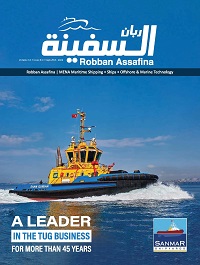OCIMF: Considerations for mooring load analysis during STS transfers
OCIMF published an information paper to support operators in making their own assessments to determine suitable weather criteria and ascertain an appropriate weather window for STS operations.
Ship-to-Ship (STS) transfer operations take place across different geographies and under varying environmental conditions, adding to the complexity and risks associated with such transfers.
The study supports KPIs listed under element 5 of the Ship-to-Ship Service Provider Management Self Assessment, 2nd edition (2020), and it used advanced mooring line load simulation technology for enhanced assessment of mooring line loads under varying environmental conditions for a variety of ship-type combinations, including LPG and LNG carriers.
| Read More: OCIMF Annual Report 2022 |
Findings applicable to all STS operations
- The longer the wave period, the higher the load in the mooring lines and therefore the associated significant wave height threshold is reduced.
- The wave height threshold is lower when the waves are on the beam, so beam exposure should be avoided.
- There is a larger relative roll between the ships when the wave period is longer.
- The daughter ship lines usually exceed the WLL before the mother ship.
- It is generally the innermost lines (which tend to be shorter) that fail first.
- As wave period increases, the wave height threshold decreases to a level where the threshold is insensitive to the vessel load condition and whether it is underway or at anchor.
- In general, the smaller vessel will be protected from shorter period waves and its motion will reduce in the lee of the larger vessel. However, the larger vessel will still be affected by long period swells from either beam.
STS study methodology
When exposed to significant wave activity, with a significant wave height, Hs, greater than about 0.5m and where the peak wave period, Tp, is greater than about 6 seconds (or where the Hs is greater than about 0.2m and the Tp is greater than about 14s), ships in an STS mooring configuration may respond significantly to the waves. Depending on the environmental conditions, this can be a cause of vessel motions and, as a result, can affect mooring system integrity. Therefore, wave effects need to be considered in an appropriate manner.
| Read More: OCIMF publishes SIRE 2.0 Question Library |
This requires a full dynamic mooring assessment. In this type of analysis, the vessel hydrodynamics are fully represented along with second-order wave effects and non-linear effects of mooring lines and fenders. The forces from waves, wind and current are usually determined for specific ships or ship types. These forces are used to calculate the corresponding time varying response of the moored vessel to the applied forces, in terms of motions and mooring forces. Statistical analyses can then be undertaken on the results to provide a much higher level of confidence than with static or quasi-static methods.
This full dynamic approach has been adopted in deriving mooring thresholds for STS operations for a range of ship type combinations, from coastal tankers to VLCCs, both underway and at anchor. In particular the following attributes are included:
- The interaction between the real position of the vessels, their velocity and inertia, and the waves and moorings.
- Resonance effects.
- The principal forces acting on moored ships, such as from swell, long period waves, second order waves, wind and current (vessel water speed).
- The effects of shallow water and the associated additional weight of entrained water when the vessel moves (added mass).
- Roll can be exaggerated in computational ship mooring models, especially quartering to beam seas.
- The models have been calibrated against other model results (both physical and numerical) and from site measurements, and in particular for side-by-side moored/double-banked ships.
- In the case of STS operations, the coupling effects between the two vessels are included.
Source: Safety4sea
| Read Here | |
 |
|



































